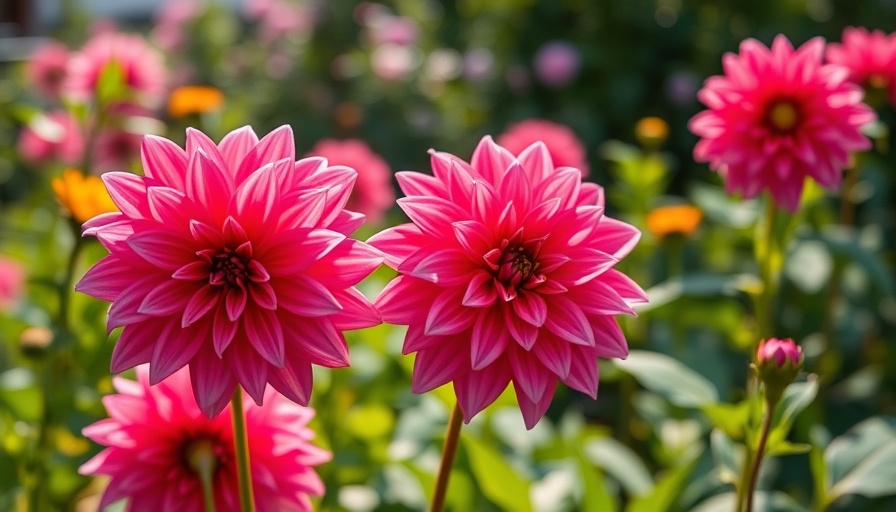
Unveiling the Beauty of Dahlias: More Than Just a Flower
Dahlias are renowned for their extraordinary beauty and versatility, making them a must-have in any summer garden. With their origins tracing back to Mexico, these tropical flowers come in a myriad of shapes and colors, ranging from delicate ping-pong ball-sized blooms to oversized, soccer ball-esque marvels. Imagine creating a vibrant tapestry in your garden: a rush of colors where butterflies flutter amidst the blooming dahlias. Growing these stunning flowers from tubers is manageable, allowing novice and experienced gardeners alike to experience the joy of nurturing life. Let's explore the enchanting world of dahlias and see how you can master their care and cultivation.
Exploring Types of Dahlias
Dahlias are incredibly diverse, with over 20,000 varieties available worldwide. This diversity allows gardeners to curate unique displays tailored to their personal tastes. Here are some standout varieties:
- Single-flowered: Featuring a single ring of flat florets, perfect for a minimalist yet striking display.
- Anemone-flowered: This type showcases a grand outer ring of petals surrounding a center filled with tubular blooms, ideal for adding elegance.
- Cactus: Known for their long, pointed petals, these dahlias make a bold statement in any garden.
When to Plant Dahlias for Maximum Blooming
The timing of planting dahlias is crucial. As a summer-blooming flower, they should ideally be planted in the spring, once all danger of frost has passed. To kick-start your gardening adventure, you may even choose to start your tubers indoors. A little foresight and care in timing your planting will set your flowers up for a vibrant summer show.
Essential Dahlia Care Tips
To ensure your dahlias flourish, proper care is key. Here are some actionable tips:
- Soil Quality: Dahlias thrive in well-drained, nutrient-rich soil. Consider incorporating compost to add nutrients and improve soil structure.
- Sunlight: Aim to plant your dahlias in a location that receives full sun; at least 6-8 hours of sun will promote their healthy growth.
- Watering: Keep the soil consistently moist but not soggy. Overwatering can lead to root rot, which is detrimental to dahlia health.
Winter Protection for Dahlias: What You Need to Know
As the growing season draws to a close, questions often arise about winter care for dahlias. While some gardeners opt to leave their dahlias in the ground, it's essential to prepare them for the colder months. If you live in a colder climate, dig up the tubers and store them in a cool, dry place to prevent them from freezing. In milder climates, with proper mulching and care, you may allow your dahlias to rest in their beds, providing they are not exposed to severe frost.
The Joy of Container Gardening with Dahlias
For those with limited space, dahlias can thrive in pots! This offers a stunning option for patios or balconies, where you can mix various types for delightful displays. Ensure your containers have sufficient drainage and use an appropriate potting mix to provide optimal growth conditions. This flexibility in growing locations also enhances your ability to place your flowering beauties where you enjoy them most.
Conclusion: Bringing Dahlias into Your Summer
Thus, by following these insightful gardening tips and understanding how to nurture dahlias from their tuber beginnings, you are well on your way to creating a flower garden that will be the talk of the neighborhood. Dahlias not only beautify our living spaces, but they also bring forth the essence of summer. Whether you are planting them in your backyard or in pots on your balcony, the resilience and vibrancy of these flowers will remind you of the sweetness of hard work in the garden.
Ready to dig in? Take the plunge and introduce dahlias to your garden this summer!
 Add Row
Add Row  Add
Add 




Write A Comment